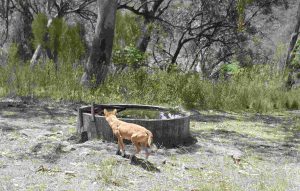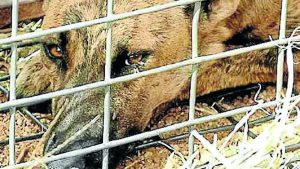Wild dog pests in their sights
Increased levels of damage to livestock have meant pest animal groups are targeting wild dogs as a priority across the region.
There are five pest groups within the Watershed Landcare area, these being the Hargraves Hill End Wild Dog Group, Ilford Running Stream Pest Group, Rylstone District Wild Dog Association, Munghorn Wild Dog Group and the newly formed Piambong Yarrabin Pest Group. These groups are volunteer run and strive to support landholders and residents within their areas to manage wild dogs and other pest animals.
The Groups, and the Mudgee LLS, are the first point of call if landholders have seen wild dogs or suspect they are suffering from livestock attack or losses.
“Communication and reporting are vital.” said Peter Sipek, Chairman of the Munghorn Wild Dog Group.
“We all need to know if our neighbours have seen dogs or they are having problems on their place. If we know where they are we can target our control much more effectively.” he continued.
Coordinated, winter 1080 baiting programs are currently being undertaken. “Again, we encourage all landholders to get involved,” said Peter “the greater the area we cover within a baiting program means fewer pockets where dogs can exist, and it takes longer for them to re-establish in the area. Wild dogs are a community problem and we need everybody to get on board.”
The Munghorn Wild Dog Group’s baiting program will be carried out on Thursday the 30 August and follows on from baiting programs recently carried out in the south and east of the region.
Remote cameras are used extensively across the region, providing a valuable tool pre and post baiting. If dogs continue to be seen on these cameras, or mauled livestock are reported after a landholder has been involved in a baiting program, then sending a trapper to the area can also be considered.

Wild dog detected on a remote camera in the upper Bylong area.
Contact details for the 5 pest groups are:
Hargraves Hill End Wild Dog Group: 0458 733 308
Ilford Running Stream Pest Group: 0427 025 802
Rylstone District Wild Dog Association: 6379 6256
Munghorn Wild Dog Group: 0417 322 436
Piambong Yarrabin Pest Group: 0438 686 369
Watershed Landcare Pest Animal Group Coordinator Beth Greenfield can be contacted for more information on 0438 090 525 or by email beth.greenfield@watershedlandcare.com.au.

